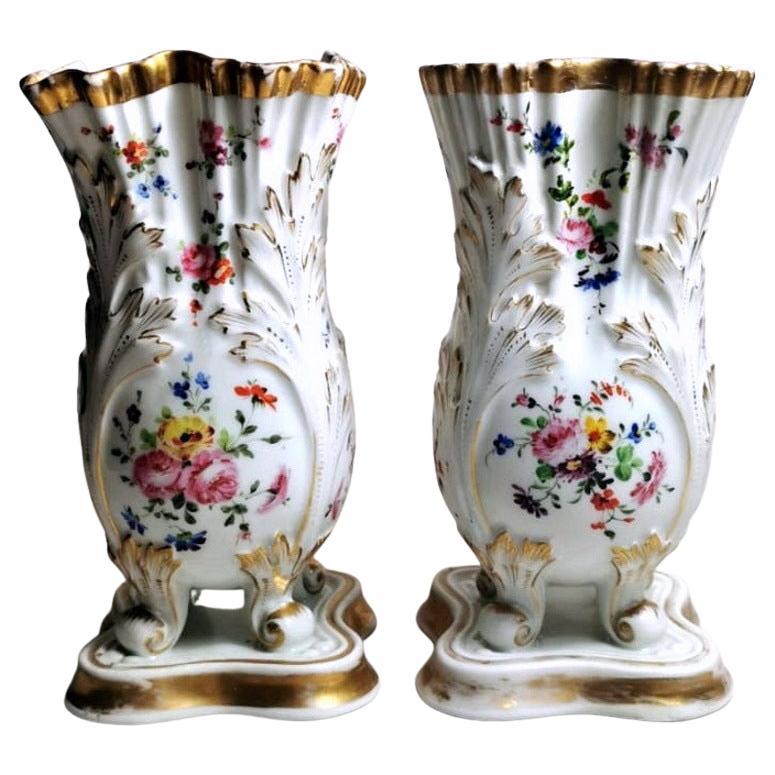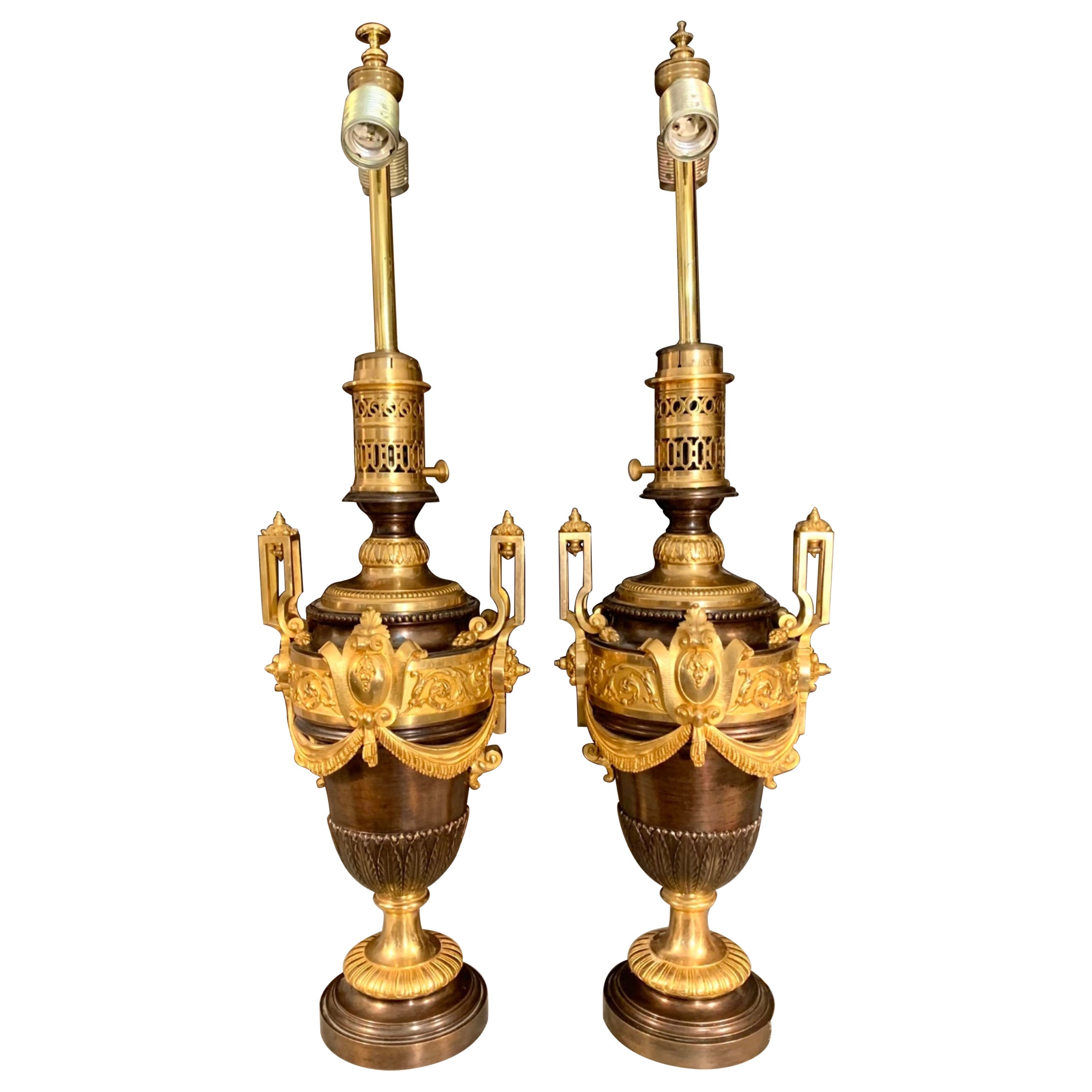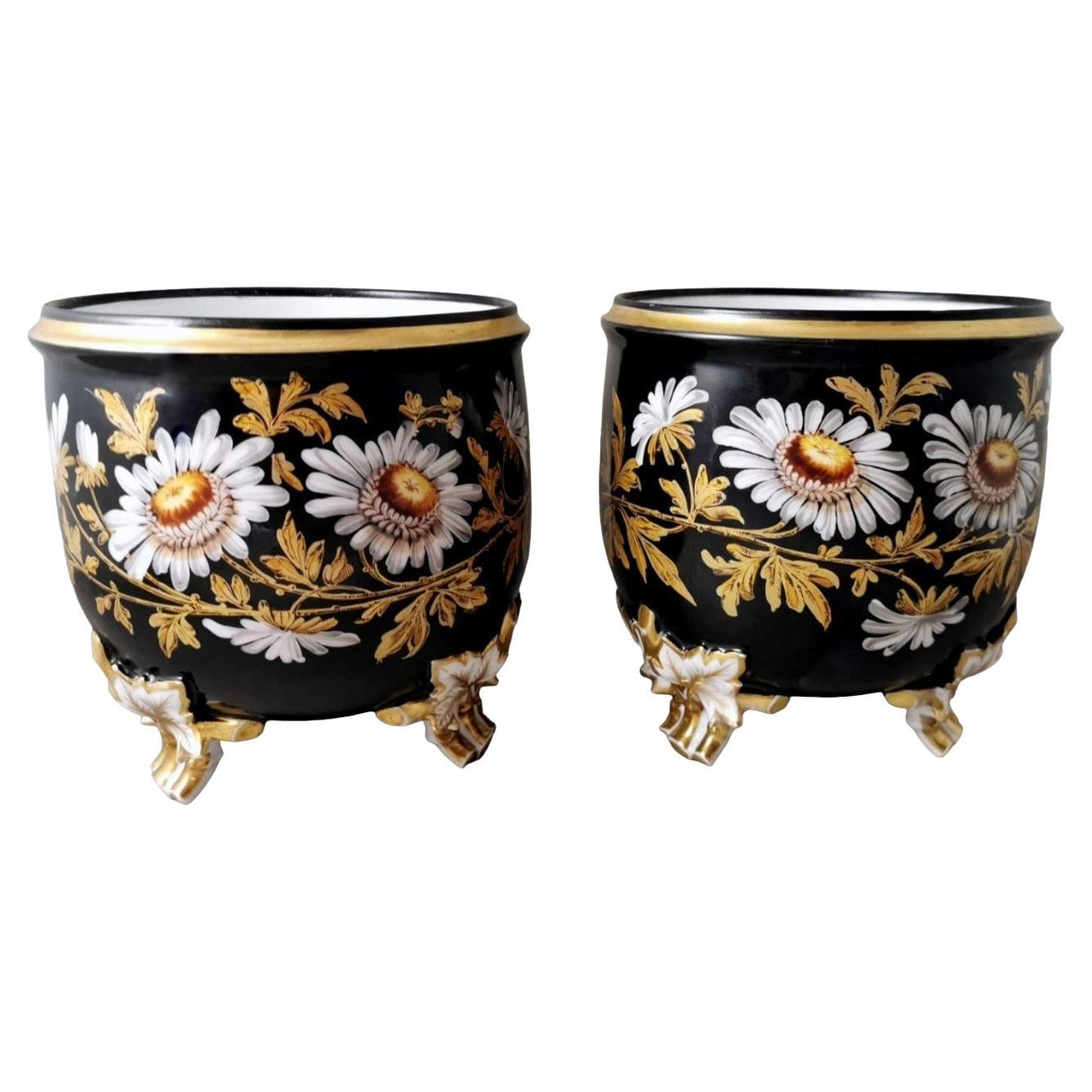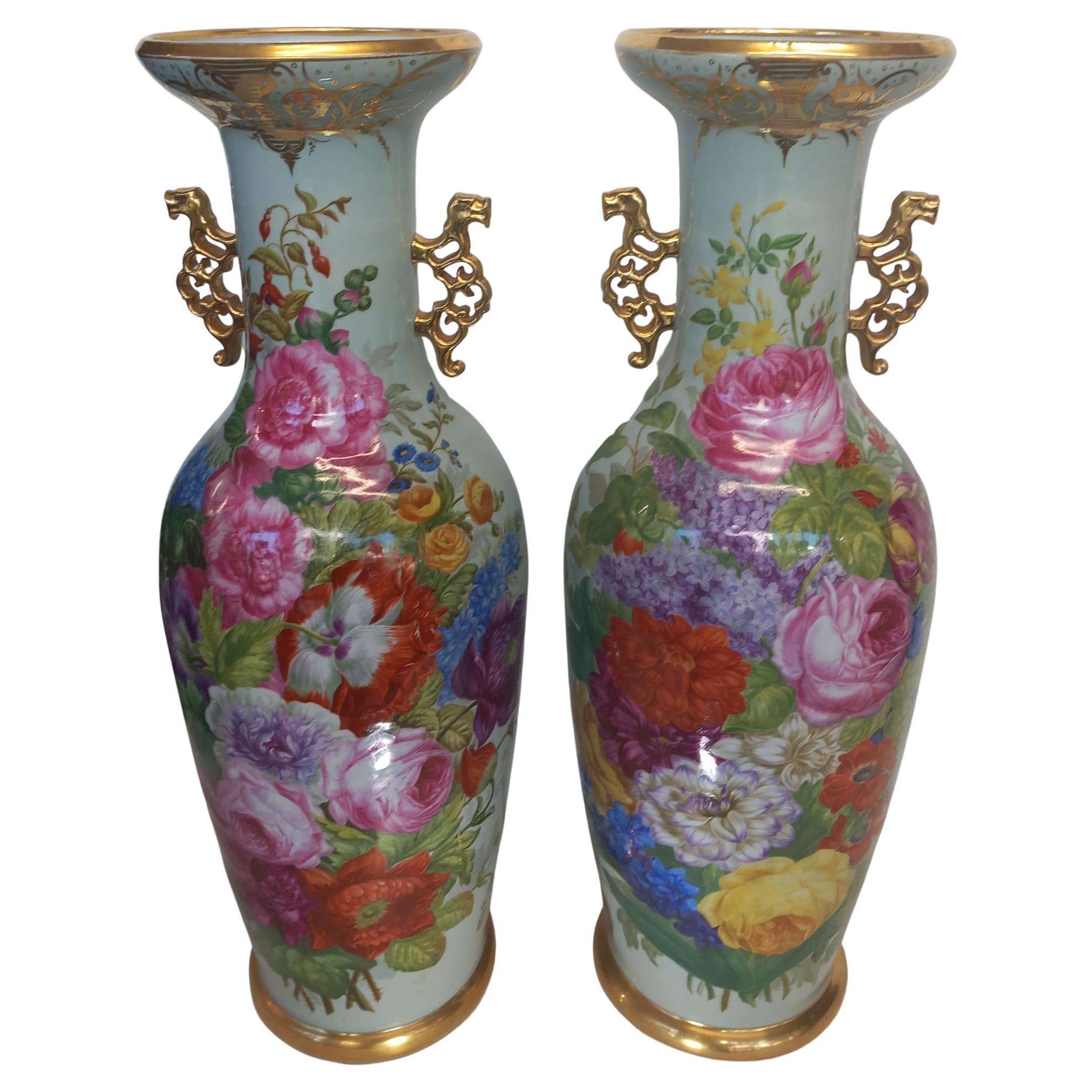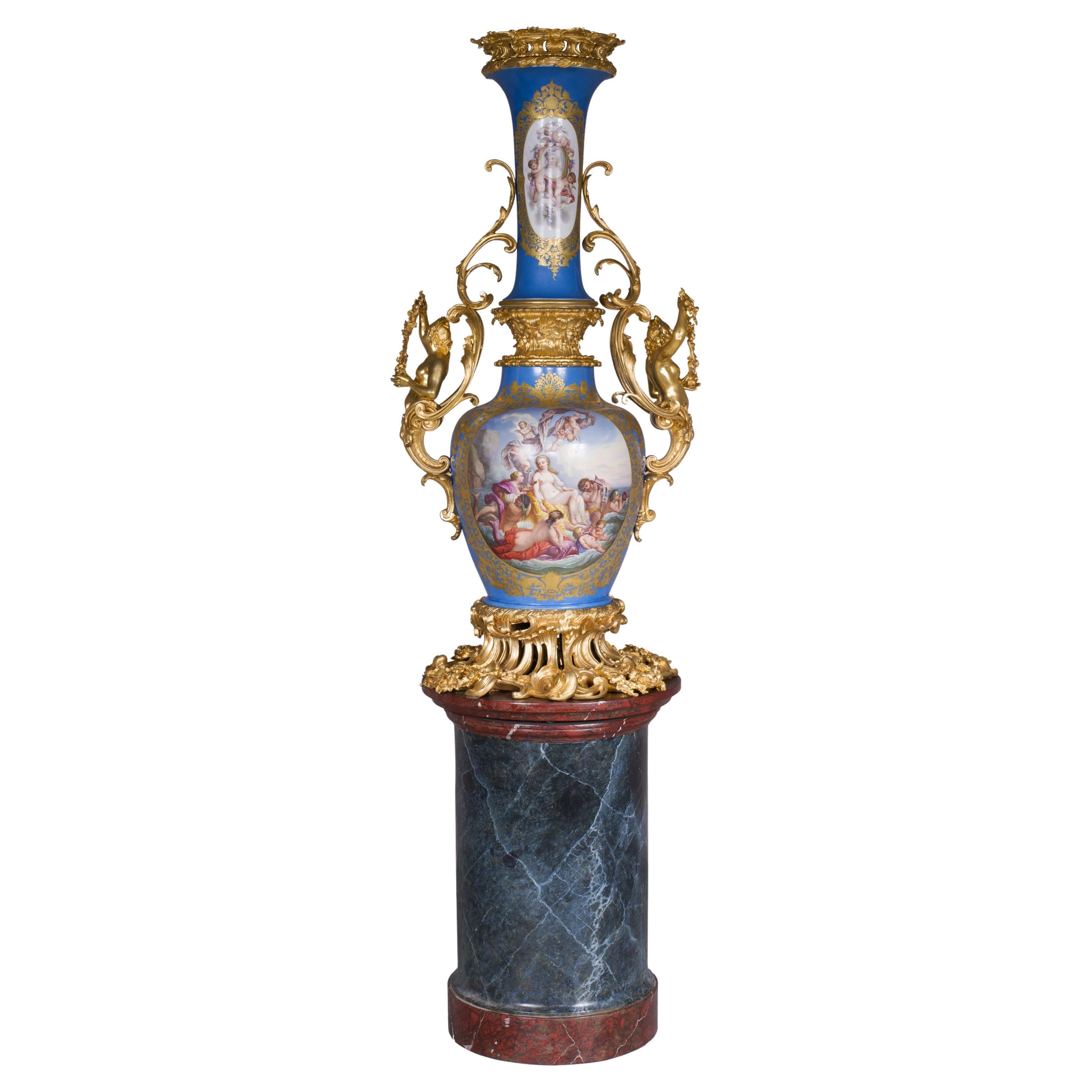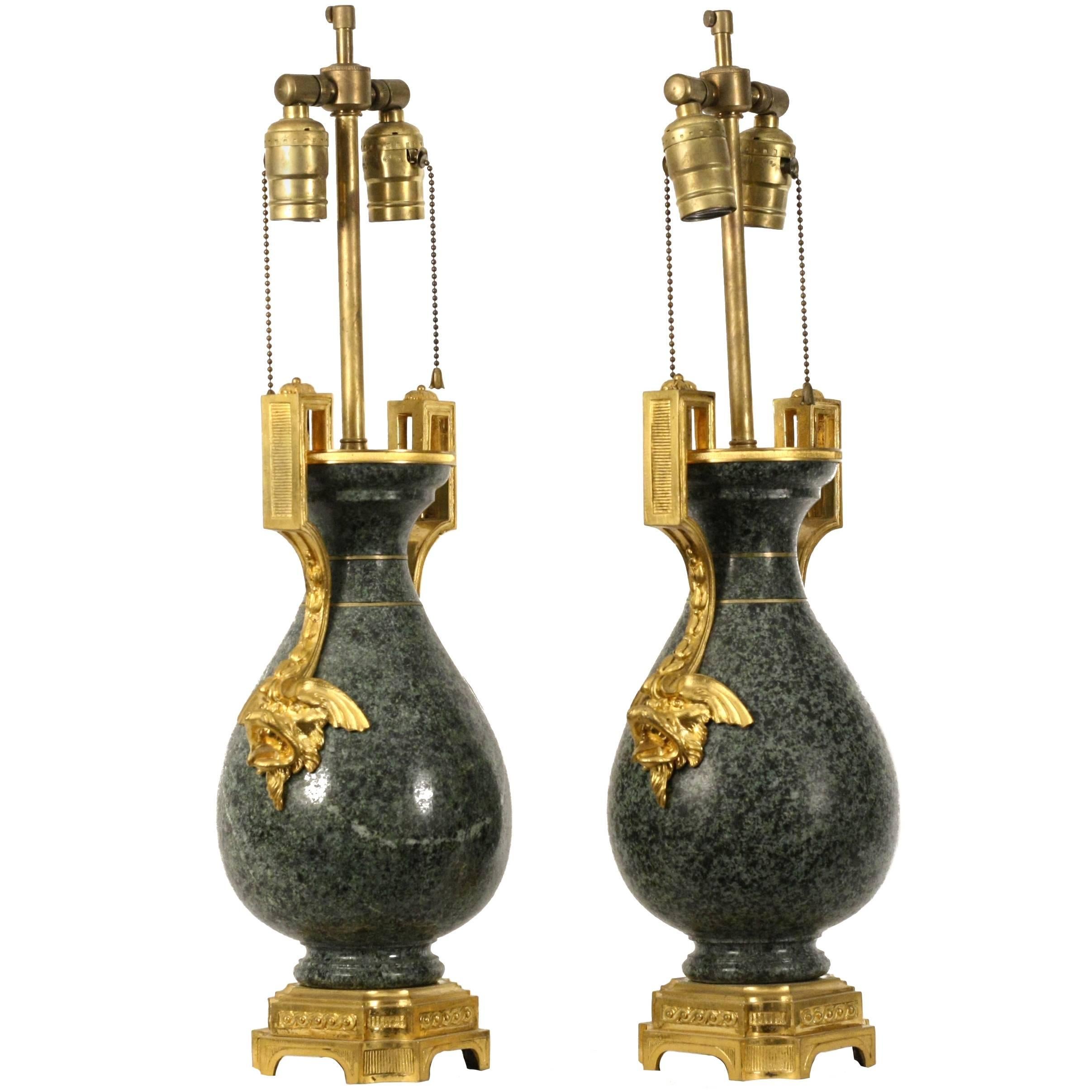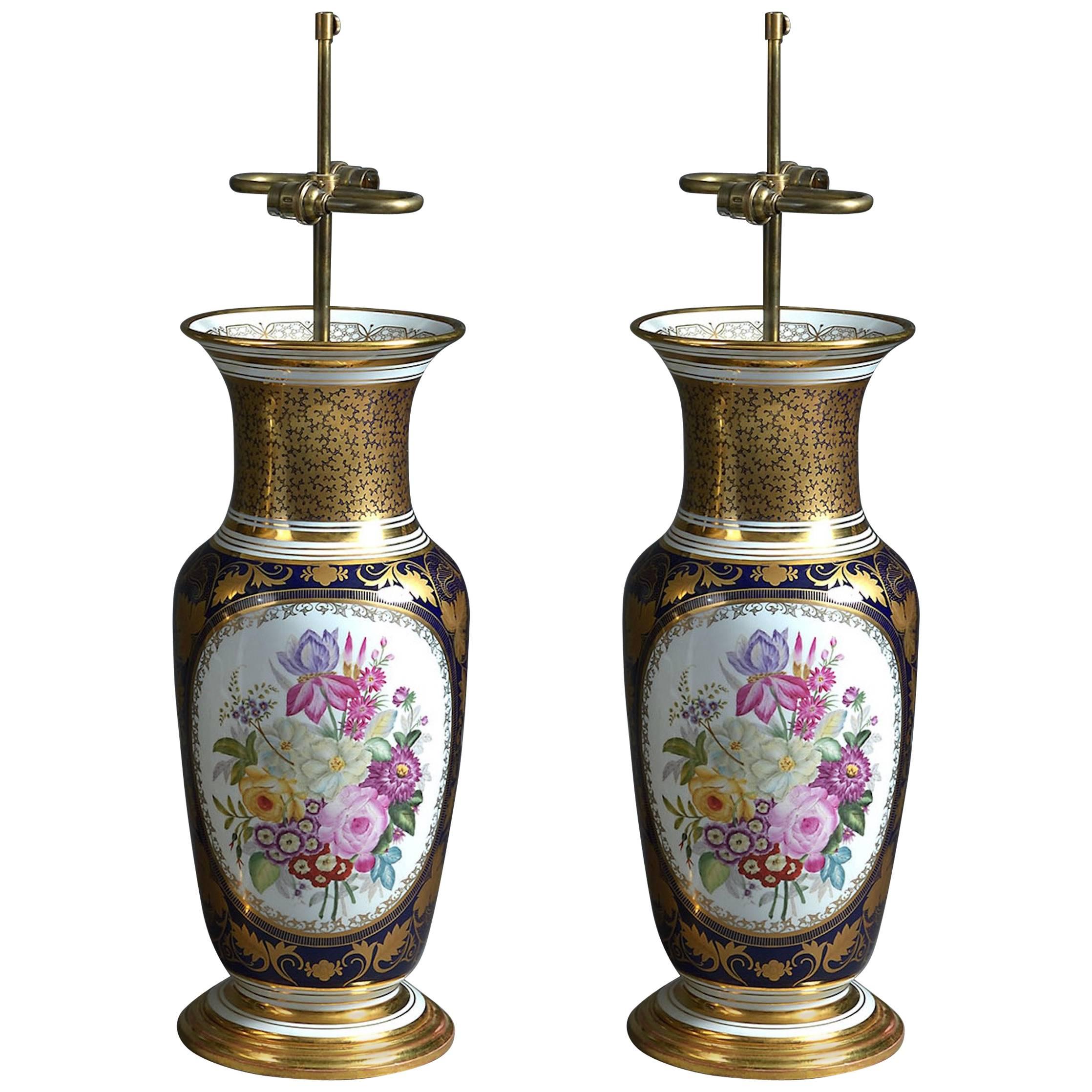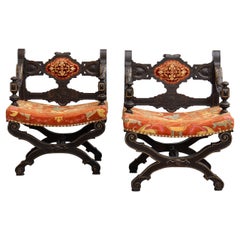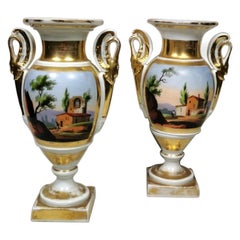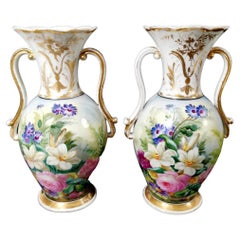
Pair of Napoléon III Polychromed Porcelain Vases Ormolu-Mounted in Lamps
View Similar Items
Want more images or videos?
Request additional images or videos from the seller
1 of 21
Pair of Napoléon III Polychromed Porcelain Vases Ormolu-Mounted in Lamps
About the Item
- Creator:Porcelaine de Paris (Manufacturer)
- Dimensions:Height: 17.72 in (45 cm)Diameter: 8.67 in (22 cm)
- Sold As:Set of 2
- Style:Napoleon III (Of the Period)
- Materials and Techniques:
- Place of Origin:
- Period:
- Date of Manufacture:circa 1880
- Condition:Wear consistent with age and use.
- Seller Location:Saint-Ouen, FR
- Reference Number:1stDibs: LU2612317354972
About the Seller
4.9
Vetted Seller
These experienced sellers undergo a comprehensive evaluation by our team of in-house experts.
1stDibs seller since 2017
57 sales on 1stDibs
Typical response time: 1 hour
More From This SellerView All
- Pair of Porcelain Vases Ormolu-Mounted in Lamps by Gagneau Paris XIXth CenturyBy Gagneau ParisLocated in Saint-Ouen, FRPair of large Japanese Porcelain Cone Shape Vases with Imari decoration Important mounts in ormolu and gilded metal, the base decorated with a laurel wreath, the upper part of falling leaves and a frieze of knotted ribbon. The mounts signed Gagneau, 115 R. Lafayette. Circa 1860 With their original aluminium bulb cover and original gilding Vase it self Height 47 cm The Gagneau Company is one of the most famous lighting factories in Paris in the nine-teenth century, established in 1800 at 25 rue d'Enghien in Paris and later at 115 rue de Lafayette. She has participated in many exhibitions throughout this century. She began in 1819 with the Exposition des Produits de l'Industrie and later participated in the Universal Exhibitions where she was part of the jury in the category of art bronzes (class 25) at the Universal Exhibition in Paris in 1889. "Imari" was simply the trans-shipment port for Arita wares, from where they went to the for-eign trading outposts at Nagasaki. It was the kilns at Arita which formed the heart of the Japanese porcelain industry. Arita's kilns were set up in the 17th century, after kaolin was discovered in 1616. A popular legend attributes the discovery to an immigrant Korean potter, Yi Sam-Pyeong (1579–1655), although most historians consider this doubtful. After the discovery, some kilns began to produce revised Korean-style blue and white porcelains, known as Early Imari, or "Shoki-Imari". In the mid-17th century, there were also many Chinese refugees in northern Kyushu due to the turmoil in China, and it is said that one of them brought the overglaze enamel coloring technique to Arita. Thus Shoki-Imari developed into Ko-Kutani, Imari, and later Kakiemon, which are sometimes taken as a wider group of Imari wares. Ko-Kutani was produced around 1650 for both export and domestic market.Kutani Ware is characterized by vivid green, blue, purple, yellow and red colors in bold designs of landscapes and nature. Blue and white porcelain pieces continued to be produced and they are called Ai-Kutani. Ko-Kutani Imari for the export market usually adopted Chinese design structure such as kraak style, whereas Ai-Kutani for the domestic market were highly unique in design and are ac-cordingly valued very much among collectors. Ko-Kutani style evolved into Kakiemon-style Imari, which was produced for about 50 years around 1700. Kakiemon was characterized by crisp lines, and bright blue, red and green designs of dramatically stylized floral and bird scenes. Imari achieved its technical and aes-thetic peak in the Kakiemon style, and it dominated the European market. Blue and white Kakiemon is called Ai-Kakiemon. The Kakiemon style transformed into Kinrande in the 18th century, using underglaze blue and overglaze red and gold enamels, and later additional colors. Imari began to be exported to Europe when the Chinese kilns at Jingdezhen were damaged in the political chaos and the new Qing dynasty government halted trade in 1656–1684. Ex-ports to Europe were made through the Dutch East India Company, and in Europe the des-ignation "Imari porcelain" connotes Arita wares of mostly Kinrande Imari. Export of Imari to Europe stopped in mid-18th century when China resumed export to Europe, since Imari was not able to compete against Chinese products due to high labor costs. By that time, however, both Imari and Kakiemon styles were already so popular among Eu-ropeans that the Chinese export porcelain copied both, a type known as Chinese Imari. At the same time, European kilns, such as Meissen and English potteries such as Johnson Bros. and (Royal) Crown Derby, also imitated the Imari and Kakiemon styles. Export of Imari surged again in late 19th century (Meiji era) when Japonism flourished in Europe.Thus, in the western world today, two kinds of true Japanese Imari can...Category
Antique 1880s French Japonisme Table Lamps
MaterialsBronze
- A French Napoleon III Large Pair of Orientalist Porcelain Plaques, 1908By Rudolf ErnstLocated in Saint-Ouen, FRA French Napoléon III Large Pair of very decorative hand-painted polychromed Porcelain Plaques with Orientalist scenes, with traditional costumed characters. In the manner of Rudolf Ernst (1854-1932), the famous Orientalist painter: One Representing “Le marchand d’oranges”, the Oranges merchant, the other one “Le fumeur de Narguilé”, the hookah smoker. Both signed L.Lagrange, one dated 1908 and located Dijon In originals wooden frames Napoléon III Period Plaque dimensions H 43 cm L 33 cm Total dimensions H 57,5 cm L 48 cm Rudolf Ernst (1854, Vienna-1952, Fontenay-aux-Roses, France) Best known for Ottoman Empire paintings...Category
Antique Early 1900s French Napoleon III Paintings
MaterialsPorcelain, Wood
On Hold$7,471 / set - Pair of French Napoléon III Curule ArmchairsLocated in Saint-Ouen, FRPair of French Napoléon III Curule Armchairs Moulded, carved, blackened wood, enhanced with gold. Open-banded back decorated with interlacing, X-bas...Category
Antique 1890s French Napoleon III Armchairs
MaterialsWood, Trimming
- French Pair of Napoleon III Ormolu Wall-Lights after Jean-Charles DelafosseBy Jean-Charles DelafosseLocated in Saint-Ouen, FR19th Century French Pair of chiseled and gilded bronze wall-lights, the fluted barrel, from which acanthus leaves escape in scrolls forming two arms of light, and crowned with a fire pot, neck-shovels with twisted flutes, heart, hoes with leaves of water. Circa 1880 Parisian quality work of the late nineteenth century after a model by Jean-Charles Delafosse (1734-1791), famous french architect, ornamentist and painter. Original gilding Electrified H 40 cm L 36 cm P 20 cm The model of our sconces takes the creations of 18th century bronzers who were directly inspired by the drawings of Jean-Charles Delafosse in the 1760s. In particular, the collection of engravings...Category
Antique 1880s French Louis XVI Wall Lights and Sconces
MaterialsOrmolu
$2,461 Sale Price / set20% Off - Theodore Deck '1823-1891', a Japonisme Polychromed Faience Quadrangular VaseBy Theodore DeckLocated in Saint-Ouen, FRTheodore Deck (1823-1891) A Polychromed Faience quadrangular vase, decorated in a cartouche with butterfly and birds on branches of prunus and peonies in the Japanese Taste on a pu...Category
Antique Late 19th Century French Japonisme Vases
MaterialsFaience
- French 19th Century Pair of Porcelain Cache-PotsLocated in Saint-Ouen, FRPair of polychromed hand painted porcelain with Japonisme floral decoration Ormolu-mounted with open-worked base and rim Louis XVI Style circa 1880.Category
Antique 1870s French Chinoiserie Planters, Cachepots and Jardinières
MaterialsOrmolu
$1,933 Sale Price / set20% Off
You May Also Like
- Porcelain de Paris Pair of Hand Painted Vases Napoleon III, FranceBy Porcelaine de ParisLocated in Prato, TuscanyWe kindly suggest you read the whole description, because with it we try to give you detailed technical and historical information to guarantee the authenticity of our objects. Pair ...Category
Antique Late 19th Century French Napoleon III Ceramics
MaterialsPorcelain
- Porcelain De Paris Napoleon III Pair of French Hand Painted VasesBy Porcelaine de ParisLocated in Prato, TuscanyWe kindly suggest you read the whole description, because with it we try to give you detailed technical and historical information to guarantee the authenticity of our objects. Beau...Category
Antique Mid-19th Century French Napoleon III Porcelain
MaterialsPorcelain
- Pair of Napoleon III Porcelain VasesLocated in Paris, FRPair of hexagonal porcelain vases decorated with multicolored flowers. The midnight blue background is highlighted with gilded floral motifs and foliage. Napoleon III period. circ...Category
Antique 19th Century French Napoleon III Porcelain
MaterialsPorcelain
$1,208 / set - Pair of French Ormolu-Mounted Blue-Ground Porcelain Vases Fitted as LampsLocated in New York, NYA fine quality pair of French Ormolu-Mounted Chinese Porcelain Vases mounted as lamps in mottled blue-ground glaze. Resting on square ormolu base with garland band and ormolu banded ...Category
Antique 19th Century French Chinoiserie Table Lamps
MaterialsBronze, Ormolu
- Porcelain De Paris Napoleon III Style Pair of Shaped Vases Hand DecoratedBy Porcelaine de ParisLocated in Prato, TuscanyWe kindly suggest you read the whole description, because with it we try to give you detailed technical and historical information to guarantee the authenticity of our objects. Part...Category
Antique Mid-19th Century French Napoleon III Vases
MaterialsPorcelain
- Pair French Patinated Bronze and Ormolu Vases Mounted Table LampsLocated in Madrid, ESA pair of two-handled vases / lamps in classic French Napoleon III style bronze and gilt ormolu of very good quality, each with a foliated plant decoration in bronze, the ormolu orna...Category
Antique Late 19th Century European Napoleon III Table Lamps
MaterialsBronze, Ormolu
Recently Viewed
View AllMore Ways To Browse
French Napoleon Porcelain Table
Ormolu Gold Painted Tables
Pair Paris Porcelain Lamps
A Napoleon Iii Ormolu Mounted Table
Napoleon Ormolu Lamps
Porcelain Napoleon Iii Pair Of Lamps
French Porcelaine Table Lamp
Porcelaine de Paris On Sale
White Metal Table
Italian Black Dining Room Table
Used Metal Office Desk
French Jacques
Set Of Lamps
1960s Metal Lamps
Unique Vintage Lighting
Dining Table 8
Modern Chrome Dining Table
Painted Table Pair





